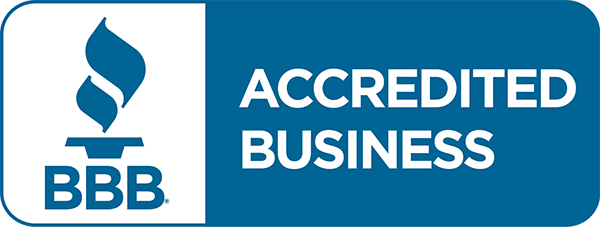Speak Their Language; Decoding Food Manufacturer’s Best Kept Secrets

Grocery shopping for many of us is a mundane necessity. Many of us go through the motions mindlessly because we have to eat.
It is possible to make grocery shopping more interactive and engaging when we ask the question: “What exactly am I eating?” Let me encourage you to become a self proclaimed food detective. Embrace the challenge of decoding the mystery ingredients the government requires food manufacturers to place on all food packaging.
Generally speaking, when reading the list of ingredients found on the packaging most people are drawn to the more popular categories such as: calories per serving, carbohydrates, and percentage of fat. This can be useful information. However, we need to keep in mind that not all calories, carbs, and fats are created equal. This information is rather moot until we do further research and discover what the breakdown of individualized ingredients actually contain.
Reading an ingredients list can seem much like translating ancient world texts. Many of the ingredients listed on the label are unpronounceable and read as gibberish to the average consumer.
For example, there are upwards of 50+ names for sugar, which makes it impossible for the average consumer to recognize and keep track of it. If you get lucky, you may actually come across a transparent label that blatantly states “sugar” but usually you’ll be looking at alternative names such as: high fructose corn syrup, sucrose, maltose or evaporated cane juice. It’s safe to assume that anything ending in “ose” belongs to the sugar family. This unfortunately puts the onus on the consumer to invest his or her valuable time analyzing whether the sugar comes from integrity or industry.
It’s disturbing to realize that there is a plethora of products on the market, of which we would never suspect, contained so much sugar. Even more shocking is the number of popular products that list sugar or a sugar supplement as their first or second ingredient. Mayonnaise, crackers, salad dressing, ketchup and orange juice are all riddled with large amounts of sugar. In addition, many products listed as being fat free depend on sugar to compensate for the loss of flavor provided by fat. Unless we are privy to this information it’s not surprising that these additives go undetected by the average person.
Why do the food companies add sugar to their products? Simple! Sugar is extremely addictive and easily disguised when you are not consciously looking for it! If the food companies get you hooked on sugar subconsciously they likely have you as a customer for life.
Another major culprit that goes by many alternative titles is sodium. Most are aware that they should avoid things like MSG (Monosodium Glutamate) that causes digestive upset and neurological interruption. MSG should be easy enough to avoid, right? No, not exactly. The food companies conveniently change its unpopular name to something less recognizable and more appealing and desirable. What you once knew as MSG is now: hydrolyzed vegetable protein, textured vegetable protein, or yeast extract. These names don’t set off any alarm bells; in fact they sound appealing, given that they contain the word ‘vegetable’.
Are there ways to keep us from ending up with a fridge and pantry full of products with harmful hidden ingredients? Yes! Read the labels. If you, in the most literal sense, have difficulty and actually cannot read it or understand the words, be on your guard. Does it sound like a chemical reaction from a test tube? Did you have to consult the periodic table of elements to understand what you’re about to eat? Don’t doubt your intelligence and try to sound it out like you’re new to the English language. These words are not in most people’s vocabulary, and should probably also be absent from your diet. So don’t let the food companies intimidate you. You’re not “dumb.” There’s nothing wrong with your intellect; the problem is with these engineered “foods” that are masquerading as edible, or even nutritional options. Yikes!
It’s difficult to completely avoid all processed and packaged foods in modern society. Most often these are the foods found in the inner isles of the store. If you do buy these products take notice of how many ingredients are on the list. The fewer ingredients an item contain the less opportunity food manufacturers have to camouflage hidden additives. In addition, focus on whole foods with recognizable names and traceable histories. If you have to flip the page for more information take this as a sign that you should pass.
Take mayonnaise for example. In the last century, your grandmother mixed egg yolk and oil together to make the simplest form of this popular condiment. Ingredients like mustard and vinegar were then added to enhance its flavor. They are also simple, stand-alone ingredients. On the flip side, cornstarch is found in many of the mayonnaise available on the market. However, cornstarch is an unnecessary ingredient in the process of making mayonnaise; it doesn’t add to the flavor, nor does it aid in the emulsification process. It’s added as a cheap bulking agent to increase yield and reduce costs.
True, it will take some research to familiarize you with the ‘sneaky’ name changes and misleading info on the labels. There are multiple resources online to guide you through label reading, and a very handy phone app called “Fooducate” that allows you to take a snapshot of the bar code and provides you with the product statistics and pros/cons.
Don’t panic and rush to throw away every item in your home with an ingredient you can’t pronounce. The goal, in learning to read labels, is to do a little research to raise your awareness of what the labels really mean. In doing this you lower the chances of falling victim to misguided food information.
Our bodies belong to us and we are consuming the food, we deserve to know the specifics of what we are eating! After all, it’s your hard earned cash that is being spent to support these companies who are deliberately lying to you.
As discussed earlier, let me return to the most frequently asked question: “How many calories per serving is in this product?” This is not imperative information until you have the breakdown of what ingredients these good or bad calories are coming from. With a deeper understanding of what’s in your food you can then make a more educated decision on whether the extra calories are worth it!
Good luck out there. You’ll be a label reading guru in no time.
Or honestly, just download the Fooducate app…


